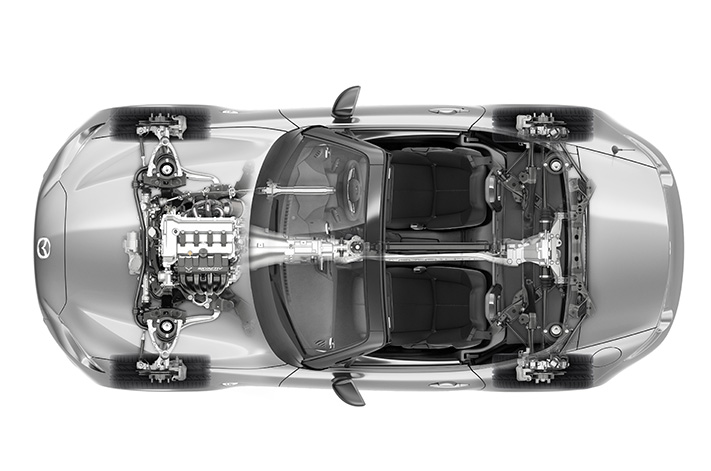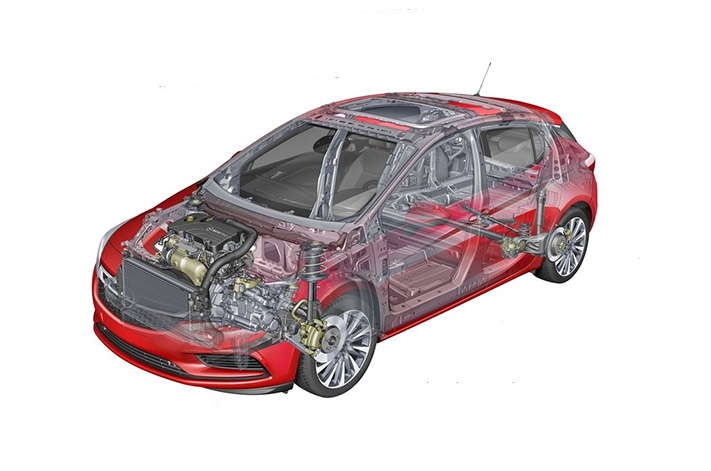
The orientation of an engine is usually described as either longitudinal or transverse. Each is so named depending on the way the crankshaft sits relative to the rest of the car.
Longitudinal engines are positioned in parallel with a car’s direction. The cylinders are placed in a row from front to rear, or ‘north-south’, in the engine bay. This style is used mostly in rear-wheel- and four-wheel-drive vehicles with their engine in the front, but can also be found in rear- and mid-engine performance cars.
The most common longitudinal setup (front-engine, rear-wheel-drive) puts the engine along the centreline of the vehicle with a gearbox behind it (between the front seats), allowing a driveshaft to run directly from the transmission to the rear differential.

Transverse engines are mounted perpendicular to the car’s direction. Their cylinders sit in a row from left to right in an engine bay, or ‘east-west’. They are used mostly in front-engine, front- and all-wheel-drive vehicles, but can also be mid-mounted in rear-wheel drive vehicles.
The most common transverse engine style is that of front-engine, front-wheel drive cars. The engine typically mounted with a gearbox to one side, in line with the crankshaft and between the front wheels. This is known as a transaxle. Short driveshafts poke out from either side of the gearbox and connect to each front wheel. This setup is significantly more compact than a front-engine, rear-wheel drive setup

Both longitudinal and transverse engine arrangements can be made to drive all four wheels. Traditional four-wheel-drive vehicles have a longitudinal engine biased towards driving the rear wheels with the front wheels engaged through a transfer case that links the transmission to the front axle.
Transverse engines run all four wheels with the addition of an extra driveshaft linking the transaxle gearbox with a rear differential.
Each engine arrangement has its pros and cons. For conventional front-mounted engines, a longitudinal setup with rear-wheel-drive provides better front-to-rear weight distribution that helps a car’s balance. This is why it’s popular in sports cars.

With a transverse front-wheel-drive setup the mass and torque is concentrated at the front of the chassis which can affect handling.
Typically, a transverse set up is more efficient, because power from the engine has less hardware to turn before it reaches the driven wheels. The longitudinal arrangement is less direct.
Longitudinal configuration does generally allow for bigger engines in front-engine vehicles. However, they have a greater impact on interior packaging because the transmission and driveshaft take up space under the cabin. Transverse powertrains in front-engine cars require less engine bay room, meaning more of the car’s footprint can be utilised for the cabin.
There are cases where longitudinal engines have driven the front-wheels. Audi has long employed such an arrangement, which places the engine a lot further forward than normal and affects the car’s weight distribution resulting in a tendency to understeer.




